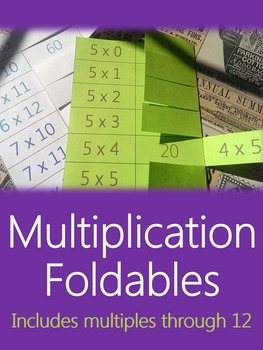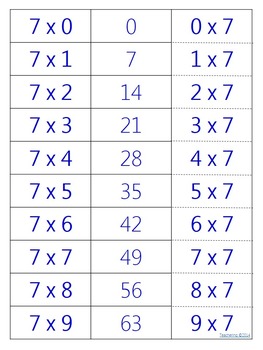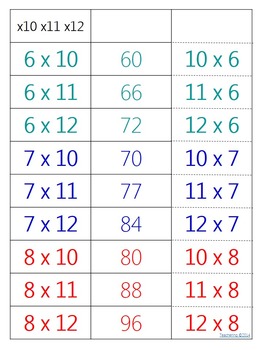Multiplication Flash Cards {Multiplication FOLDABLES for commutative property}
- Zip
What educators are saying
Description
Help your students master their 0-12 multiplication facts with these multiplication flash cards! Easily differentiate by giving students different multiplication foldables based on their current math fact fluency & mastery. This new spin on multiplication flashcards includes 1 foldable set showing the commutative property and another that does not. PLUS, a NEW random order set for each times table! (Added 11/6/18) Choose the set that is best for meeting your students where they are with building multiplication fluency!
Includes multiplication tables for facts 0-12.
Attach these 10-door math fact foldables to interactive math notebooks or send home with each student as engaging multiplication flash cards. Watch how excited students get when they bump up to a new fact foldable!
***This is part of my larger, discounted, Foldable BUNDLE, which includes Division Foldable Flashcards***
Check out this 35 second how-to video to see how easy they are to make!
Directions:
Print/copy all foldable pages back-to-back in color or black & white (both options included).
*If using these foldables with an interactive notebook, shrink the pages to 85%, and they will fit perfectly!
Cut the foldable around the outside (solid) lines.
Cut on the horizontal dotted lines on the right side of the pages to make your flaps. Fold the flaps inward.
Use as is, OR
attach to interactive student notebook (ISN) by
flipping the page over to the side with a rectangle. Follow the directions that say,
”Glue inside this rectangle.”
Leaving the flaps free to move, adhere page to student notebook.
Study away!
***Love foldables? Check out some other popular ones below!***
Scaffolded Paragraph Writing {Natural Disasters Theme}
States, Capitals, & Abbreviations
BUNDLE (Includes ALL my foldables!)
I hope your students have fun while improving their fluency in multiplication. Happy Teachering!
Amber
Terms of Use
Copyright 2014, Amber Genzink, Teachering. All rights reserved.
Permission is granted to copy pages specifically designed for student or teacher use by the original purchaser or licensee. The reproduction or distribution of any other part of this product is strictly prohibited. At the time of purchase, additional copies of products can be purchased at half price at my TeachersPayTeachers store for sharing with others. Duplicating any part of this product and placing it on the Internet in any form (even a personal/classroom website) is strictly forbidden. This would make the product available on the Internet, free of charge, and is a violation of the Digital Millennium Copyright Act (DMCA). Thank you for respecting my time and work. I appreciate your business and support!





